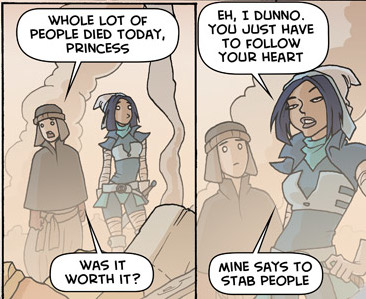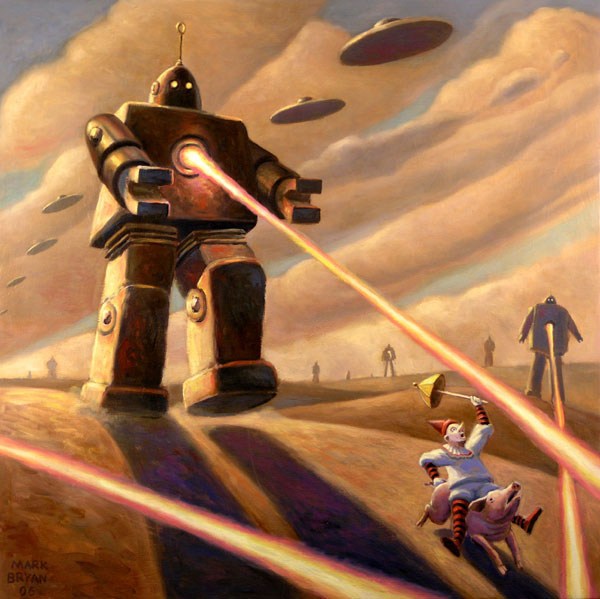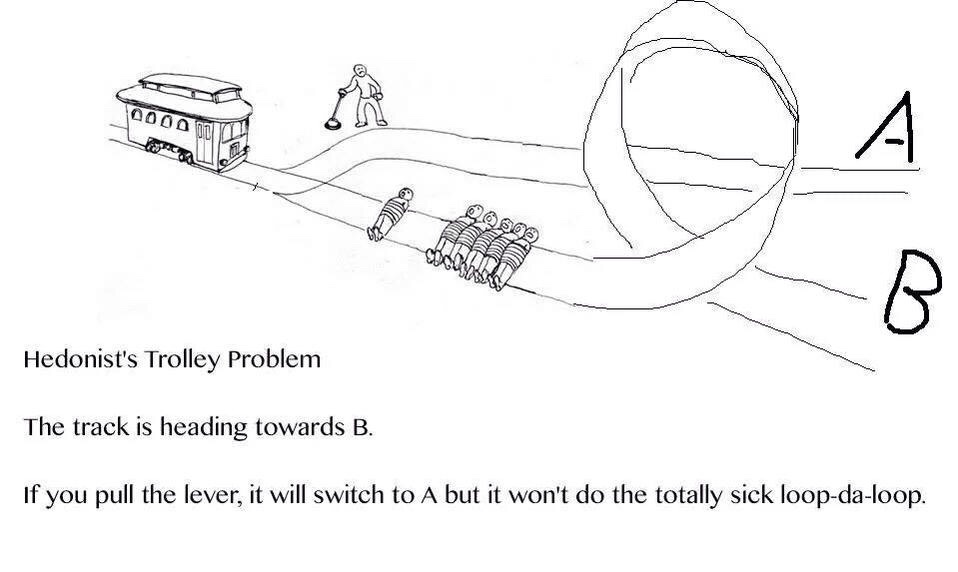[check out my more recent Monty Redux for, perhaps, a clearer exposition]
The Monty Hall Problem illustrates an unusual phenomenon of changing probabilities based upon someone else’s knowledge. On the game-show Let’s Make a Deal the host, Monty Hall, asks the contestant to choose one of three possibilities – Door One, Two or Three – with one door leading to a prize and the other two leading to goats. After the contestant selects a door, another door is opened, one with a goat behind it. At this point the contestant is allowed to switch the previously selected door with the remaining (unopened) door.
Common intuition is that this choice does not present any advantage because the probability of selecting the correct door is set at 1/3 at the beginning. Each door has this 1 out of 3 chance of having a prize behind it, so changing which door you select has no effect on the outcome.
In hindsight, this intuition is wrong. If you initially selected the first goat and then switch when you get a chance, you win. If you selected the second goat and switch, you win. If you selected the prize and switch, you lose. Therefore if you switch, you win 2 out of 3, whereas if you do not switch you win only 1/3 of the time.
So what has gone horribly wrong here:
- Why is most everyone’s intuition faulty in this situation?
- How does switching doors make any difference?
- When did the 1/3 probability turn into a 2/3 probability?
At the beginning of the game you have a 2 out of 3 chance of losing. Likewise the game show has a 2 out of 3 chance of winning (not giving you a prize) at the beginning of the game. Both of these probabilities do not depend upon which door the prize is behind, but only upon the set-up of a prize behind only one of three doors. For instance, an outside service (not the game show) could have set everything up such that both you and the game show would be kept in the dark: there would still be 2 goats and a prize, but neither you nor the game show would know which door led to the prize.
Now imagine that it is the game show that is playing the game. The game show is trying to win by selecting a goat. From this perspective, whichever door that was chosen is good: this door has a 2 out of 3 probability of being a winner (being a goat). Therefore when given the opportunity to change (after the outside service opens a door and shows a goat), there is no reason to do so.
Of course you, the contestant, are the one making the selection, and you do not want a goat. However, if you imagined yourself in the position of the game show at the beginning, as trying to select a goat, you would reasonably assume that, just as the game show did, you were successful in choosing a goat. When given the choice to switch, now that the other goat has been removed, it seemingly makes sense to change your selection.
In this case the easiest way to view the situation is in terms of how to lose, or by considering all the possible outcomes (as mentioned above). Though this is a guess, it seems that our first blush reaction to this problem is always to view it in terms of winning and this is the reason we do not immediately recognize the benefit in switching. We start out with a 1/3 chance of winning and switching doors doesn’t immediately seem to increase this percentage.
To answer how switching doors makes a difference we need to look more closely at the doors. The door that was initially selected has a 1 out of 3 chance of being a prize, and this does not change. If you were to play many times and ignore changing doors, then you would win 33.3% of the time. At the outset the other two doors each have the exact same chance of being a winner, 1 out of 3. So the other two doors combined have a 2 out of 3 chance of containing a winning door.
Now the game show changes the number of doors available from 3 to 2, with one door guaranteed to contain a prize. If you were presented this situation without knowledge of the previous process, then you would rightly put the chance of selecting the prize at 1 out of 2, 50%.
However, you know something about the setup: The door that was initially selected had a probability of having a prize behind it set at 1 out of 3. The thing behind the other door, though, has been selected from a stacked deck: Whatever is behind the door was selected from a group of objects with a 2 out of 3 chance of containing a prize (1/3 + 1/3). You know that the odds on this door are stacked in your favor because the game show knowingly reveals the goat: In the 2/3 case in which you have previously selected a goat, the prize is behind one of the other two doors. When the game-show reveals (and removes) a goat, it guarantees that the prize is behind the last door. Therefore switching doors at the end is equivalent to combining and selecting the probability associated with the two doors not initially selected.
If the game show did not knowingly reveal the goat, you would not be able to take advantage of the stacked deck. Imagine that you select the first door and then another door is opened randomly, revealing a goat. By randomly eliminating this door (and not looking behind the unselected doors) the door that was initially selected becomes unrelated to the present choice: Only by looking behind the unselected doors does the initial selection become fixed in reference to the other doors. Since no one looked behind the doors, some bored, but not malicious, demon could have come and switched whatever was behind the selected and remaining door and neither you nor the game-show would be able to tell. Therefore switching doors when a goat is randomly revealed provides no advantage because the initial selection cannot be related to the probable location of the prize.
Only when the contestant can fix the probable locations of the prize because the location of the prize is known by the game-show, is it possible to assign interdependent probabilities on the location of the prize and the previous selection made. The odds are then tilted in the contestant’s favor by switching away from the low probability initial selection to the door that has the combination of remaining probabilities.
The logic of this needs to be represented game-theoretically with the different quantifiers representing different players of a game of incomplete information. The game would run* like this:
Domain={prize, goat, goat}
| Contestant | Game Show | |
| 1. | – | ∃x∃y∃z∀a/x,y,z∃b∀c/x,y,z(a=x & b=y & c=z) |
| 2. | – | ∃y∃z∀a/x,y,z∃b∀c/x,y,z(a=g & b=y & c=z) |
| 3. | – | ∃z∀a/x,y,z∃b∀c/x,y,z(a=g & b=g & c=z) |
| 4. | ∀a/x,y,z∃b∀c/x,y,z(a=g & b=g & c=p) | – |
| 5. | – | ∃b∀c/x,y,z(p=g & b=g & c=p) |
| 6. | ∀c/x,y,z(p=g & g=g & c=p) | – |
| 7. | ∀d∀c/x,y,z(d=g & g=g & c=p) | – |
| 8. | ∀c/x,y,z(g=g & g=g & c=p) | – |
| 9. | (g=g & g=g & p=p) | – |
Line 1 is the initial setup of the prize game: the goal is for the contestant to make his or her placement of the prize and goats match the game show’s placement. Whatever is on the left side of an = will be what the contestant thinks is behind a door and what is on the right of an = will be what the game show puts behind the door, such that each = represents a door. If the formula is satisfied then the contestant will have successfully guessed the location of the prize.
Lines 2, 3 and 4 represent the results of the Game Show placing the prize and goats. Line 5 is the result of the first move of the contestant choosing where he or she thinks the prize is: the ‘a/x,y,z’ means that whatever placed in spot a has to be done independently, i.e. without knowledge, of what x or y or z is. Then the game show reveals a goat behind one of the doors not selected by the contestant. Line 7 represents the choice that is given to the contestant to switch his or her initial placement of where the prize is. Line 8 is the important step: since the contestant does not know what is behind the doors (c/x,y,z) it looks as if there is no advantage to switching. However, the contestant does know that when making a choice to reveal a goat in line 6 that at this point the game show had to know what was behind every door. This means that c is dependent upon b which was depended upon x, y, and z. With this knowledge the contestant can figure out that there is an advantage to switching because the selection of b in line 6 fixed the locations of the prize & goats and in doing so fixed the odds. Since the odds were intially stacked against the contestant, switching to the only remaining door flips the odds in the contestant’s favor, and is done so in this example. Line 9 shows that all the contestant’s choices match up with what the game show has placed behind the doors and hence she or he has won the prize.
* To do a better representation would require keeping the gameshow from not placing a prize anywhere by using a line like ‘x≠y or x≠z’. For graphical brevity I left it out.



The New York Times has just put up an interactive version of the Monty Hall problem, which allows you to play each strategy (switch or stick) and run up counts. via: Certain Doubts